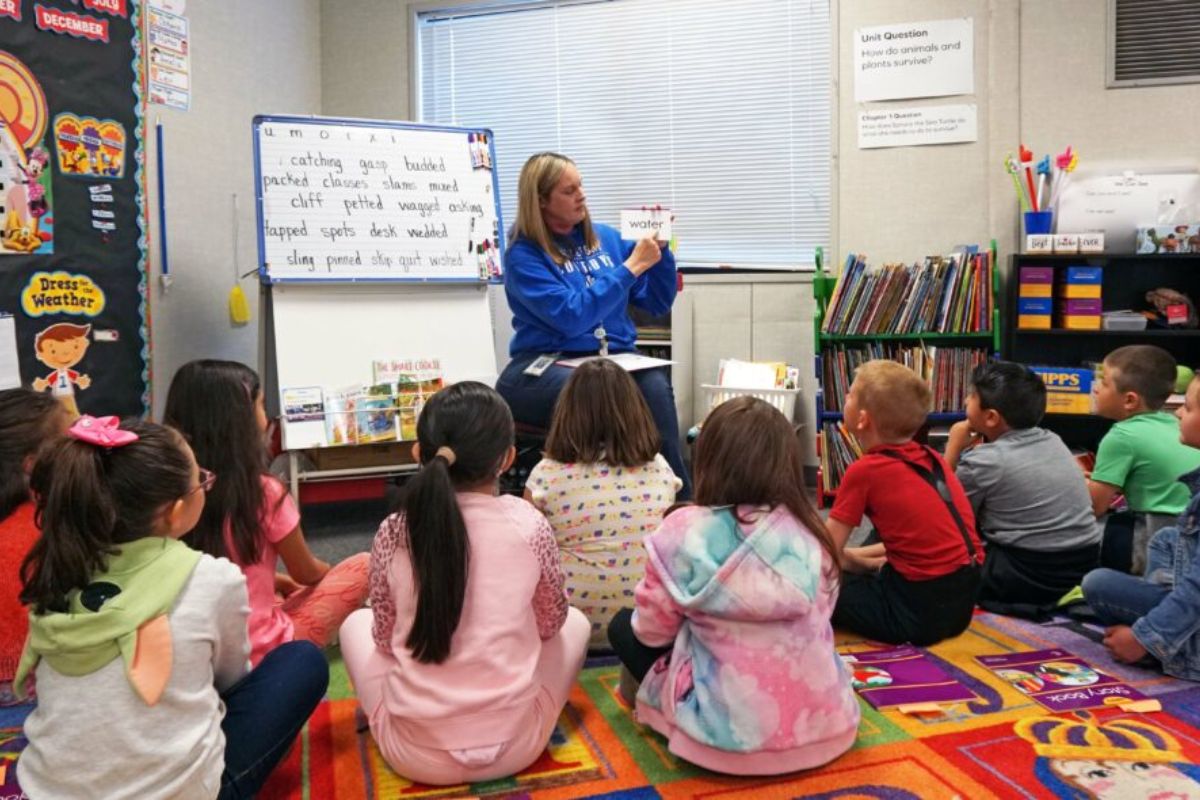California New Teaching Standards Family Focus: California’s educational landscape is undergoing a significant transformation with the introduction of new teaching standards. These standards place a heightened emphasis on family involvement and social-emotional learning (SEL). They mark a departure from traditional approaches and signal a shift towards more holistic and inclusive educational practices.
The implications of these changes are far-reaching, promising to reshape classroom dynamics and student outcomes. Educators and policymakers are grappling with the nuances of these standards. Questions arise about the practicality of implementation and the readiness of stakeholders to embrace this paradigm shift.
Key Takeaways
- Culturally responsive teaching and social-emotional learning (SEL) are prioritized in California’s updated teaching standards.
- Family engagement is a highlighted component to create a supportive learning environment.
- The standards aim to enhance student learning experiences through inclusive practices.
- California’s new teaching standards emphasize a focus on family involvement and prioritizing SEL for student success.
Groundbreaking Changes: California Approves Updated Teaching Standards
In a monumental decision, California has officially approved a comprehensive update to the Standards for the Teaching Profession, ushering in a new era of expectations for educators across the state. The California Commission on Teacher Credentialing’s approval of these groundbreaking changes signifies a pivotal moment in the realm of education.
With a keen focus on meeting the diverse needs of students in today’s ever-evolving educational landscape, the state is demonstrating a commitment to enhancing teaching practices. This significant update reflects California’s dedication to ensuring that educators are equipped with the necessary tools and skills to effectively engage and support students from various backgrounds.
Renewed Emphasis: Culturally Responsive Teaching, SEL, and Family Engagement
With a focus on enhancing student learning experiences, the updated teaching standards in California emphasize culturally responsive teaching, social-emotional learning (SEL), and family engagement as integral components of effective education practices. These elements are designed to create a supportive and inclusive learning environment where every student can thrive. Here’s a breakdown of the renewed emphasis:
- Culturally Responsive Teaching: Educators are encouraged to understand and respect the diverse cultural backgrounds of their students, incorporating this knowledge into their teaching practices to make learning more relevant and engaging.
- Social-Emotional Learning (SEL): The standards prioritize the development of students’ social and emotional skills, aiming to nurture their ability to manage emotions, build positive relationships, and make responsible decisions.
- Family Engagement: Recognizing the significant impact of family involvement on student success, the standards highlight the importance of building strong partnerships between schools and families to support learning both at home and in the classroom.
Transformative Impact: Stakeholder Support and Recognition
Amidst discussions surrounding California’s new teaching standards, the resounding support and recognition from stakeholders underscore the transformative impact envisioned for education in the state.
During the commission’s meeting, stakeholders overwhelmingly expressed their backing for the revised standards, recognizing the profound potential they hold. Advocates emphasize the importance of these changes in revolutionizing teaching practices and ultimately enhancing student outcomes.
At the core of these standards is a commitment to humanizing the education system. By valuing and acknowledging students’ diverse identities, the standards aim to create inclusive learning environments where every individual feels seen and heard.
This shift towards a more holistic and inclusive approach to education has garnered widespread acclaim from those invested in the betterment of California’s educational landscape. The alignment of these standards with the values of stakeholder groups further solidifies their potential to bring about meaningful and lasting change in the realm of teaching and learning.
Key Domains: Blueprint for Effective Teaching
The foundation for effective teaching under California’s new standards lies in the delineation of six key domains that encompass essential aspects crucial for fostering student-centered learning environments. These domains serve as a comprehensive blueprint for educators to enhance their teaching practices and better support student growth and development.
- Engaging and Supporting All Students: This domain focuses on creating inclusive and supportive learning environments that cater to the diverse needs of all learners, ensuring each student feels valued and motivated to succeed.
- Creating Effective Learning Environments: This domain emphasizes the importance of establishing a positive classroom climate conducive to learning, where students feel safe to express themselves and engage in meaningful educational experiences.
- Continuous Professional Development: This domain highlights the significance of educators engaging in ongoing learning and growth to stay abreast of best practices, refine their teaching techniques, and ultimately improve student outcomes.
Also Read: Los Angeles Faces Record Rainfall Amid Statewide Flood Alerts
Challenges and Future Directions: Implementation and Readiness Concerns
Implementation challenges and readiness concerns surrounding California’s new teaching standards are prompting critical discussions on the future of educational outcomes and the need for a strategic transition plan.
While there is widespread support for the updated standards, doubts have been raised about the preparedness of programs to effectively implement them.
The decision by the commission to launch these standards in the 2025-26 academic year has ignited conversations about the pressing need to enhance educational results.
The article highlights the hurdles in implementation and outlines future directions, stressing the importance of a well-thought-out transition strategy to assist school districts and teacher training initiatives.
The revised Standards for the Teaching Profession represent a significant advancement towards creating inclusive, student-centric learning environments tailored to the diverse student body in California.
As stakeholders navigate these challenges, a focused effort on preparedness and implementation strategies will be crucial to ensure the successful realization of the new teaching standards and the improvement of educational outcomes statewide.
Conclusion Of California New Teaching Standards Family Focus
California’s new teaching standards mark a significant shift towards prioritizing:
- Family engagement,
- Social and emotional learning (SEL), and
- Culturally responsive teaching.
With stakeholder support and recognition, these changes have the potential to transform the education landscape in the state.
While challenges in implementation and readiness remain, the updated standards provide a blueprint for effective teaching that can lead to positive outcomes for students, families, and communities.
Our Reader’s Queries
What are the social-emotional standards in California?
California’s dedication to Social-Emotional Learning is evident in the creation and integration of robust SEL standards. Covering self-awareness, self-management, social awareness, relationship skills, and responsible decision-making, these standards form a comprehensive framework.
What are the five categories of social emotional learning?
Encompassing five interconnected areas of proficiency, these standards offer illustrative examples for each: self-awareness, self-management, social awareness, relationship skills, and responsible decision-making.
What does social emotional learning teach?
Social-emotional learning serves as both a philosophy and methodology, aiding students of all ages in understanding their emotions, experiencing them fully, and fostering empathy for those in their surroundings.




